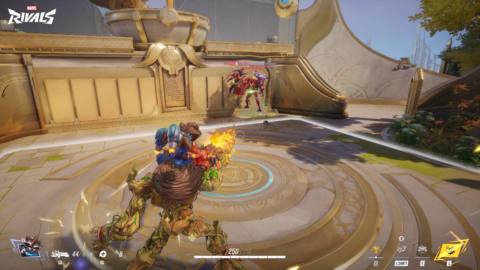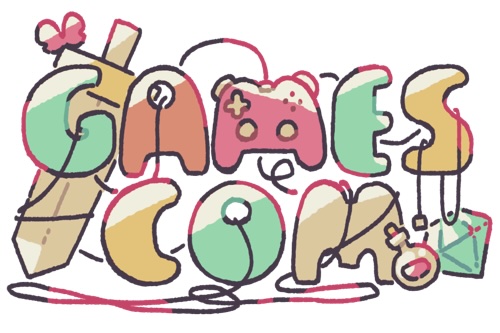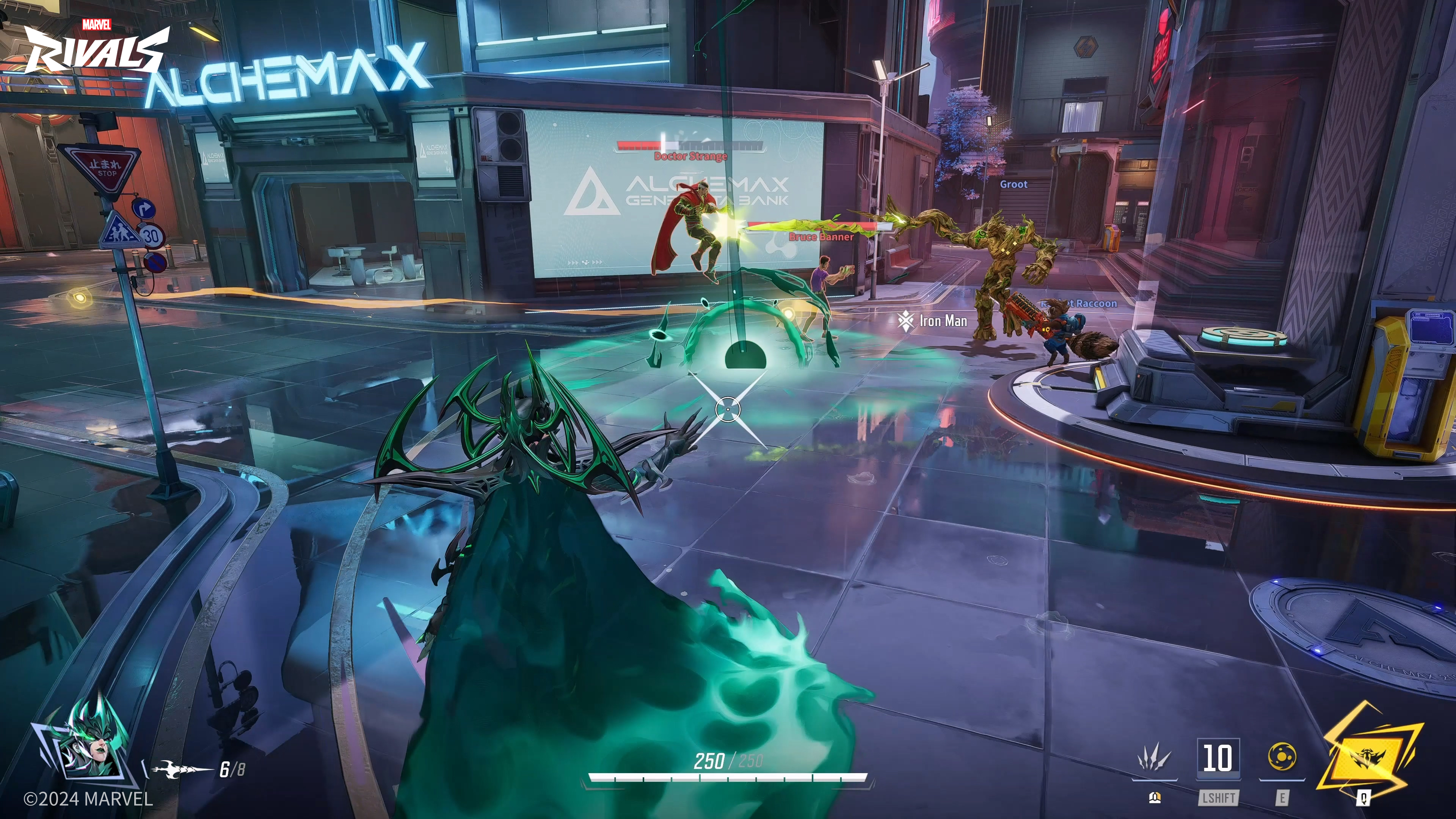
Dread it or run from it, but hero shooters arrive all the same. The framework popularized by Team Fortress 2 has come to dominate competitive multiplayer over the past decade, from Siege to Apex Legends, Valorant, Overwatch, and, most recently, Valve’s experimental MOBA shooter Deadlock, which has already cleared 100,000 concurrent players in closed beta.
Marvel Rivals is the latest free-to-play effort trying to break into this challenging, saturated market, but the gambit it’s proposing is hard to ignore. When it drops on Dec. 6, Marvel Rivals will feature at least 25 superheroes and villains, all unlocked and playable at launch and beyond. So even if you’re not an early adopter and your friends eventually convince you to play it in mid-2025, you’ll have the same level of access as the rest of the player base, including whichever supes are added to the game by that point.

Check out Polygon’s Gamescom 2024 hub page for all our coverage of the world’s biggest games event.
When I sat down to speak to a trio of developers from the Marvel Rivals team at Gamescom, it became clear that the team is feeling reassured by the reaction to recent playtests. “What was most surprising is that players were asking for another beta… during the beta,” laughed Marvel executive producer Danny Koo. “We expected a certain number, but in closed alpha and beta, we exceeded it by, like, a hundredfold. This gave us confidence afterwards, and we looked at the analytics from it, and hence, we announced the release date.”
Game director Thaddeus Sasser chimed in to add that the Marvel Rivals Discord channel cleared 350,000 members. So, a breakfast of statistics consumed, it’s safe to say that Marvel Rivals has won the popular vote — but beyond the stopping power of its behemoth license, can it get (and keep) a seat at the table with other competitive hero shooter stalwarts?
In the days leading up to my appointment, the shorthand of “that Marvel Overwatch game” had already been formalized among my fellow journalists — and with good reason. Marvel Rivals looks a lot like Blizzard’s genre-defining hero shooter, down to the typography and user interface effects as you delete another player’s health bar. It plays similarly, too, with plenty of analogous abilities and escort-focused objective play that makes it easy to interpret for genre-seasoned players.
I had a surprising amount of fun learning Scarlet Witch, a glass cannon duelist who can fly around the battlefield and launch projectiles at typically grounded opposition. Her ultimate, Reality Erasure, is more than capable of a team wipe if deployed with care. It’s an area-of-effect blast similar to D.Va’s Self-Destruct, but it emanates from Scarlet Witch’s body, meaning you’ll need teammates to protect your run-in for a devastating gank. The only concern is readability. The game can get visually busy, especially with the third-person perspective and chaotic blur of team fight ability effects.
You can feel Marvel Rivals trying to provide every clippable moment a player could ever want from a hero shooter, but bolstering individual agency within that maelstrom is no small task. Balance will undoubtedly be an issue as NetEase throws more ambitious characters into an already complicated “anything goes” roster. Another facet to think about here will be the rotating team-up abilities, a concept unique to Marvel Rivals, where specific compositions of characters unlock new passive and active skills in combat. “Every season, we have the notion of who can team up with who, with bonuses,” said Koo.
During Gamescom, I went hands-on with Captain America and the Winter Soldier, the latest additions to the character pool. Combat designer Zhiyong Feng said Cap was built around an “I can do this all day design philosophy,” so his abilities center around high mobility and staying power. Rogers is a formidable tank with a ricocheting shield, at his best launching into battle and crashing down on enemies. On the other hand, the Winter Soldier is a gun-wielding character like the Punisher, but NetEase was keen to differentiate the experience between the two. “The Punisher is a one-man army with many different weapons, whereas with the Winter Soldier, we wanted to focus on his mechanical arm to drag enemies in,” Feng said. “We want players to switch between the arm and the gun frequently, which is why your gun gets reloaded when you unleash an ability.” As well as a hook, Bucky boasts a dash-propelled launching attack (a Doomfist uppercut), and his ultimate is an airborne slam that can instantly refresh if it kills an enemy.
Regarding the process of picking a new hero for Marvel Rivals, Koo said NetEase and Marvel have gravitated toward a 70% to 75% split of “greatest hits” heroes. “Then we throw in some curveballs for the rest and dig deep to bring ancient characters back to the forefront,” Koo added. This is why Captain America and Venom (who can wall crawl and web around the map) appear alongside Luna Snow and… Jeff the Land Shark. According to Sasser, the relationship between NetEase and Marvel is highly collaborative. “It’s not about yes or no; it’s more about how this aligns with the vision of the character and what the audience wants,” he said. “It’s much more of a conversation than it is confrontational, as you might think.”
NetEase and Marvel have a plan for the characters they’re going to introduce in the future, but they also want to be reactive to the demands of players, so it is subject to change. “The core philosophy is that each character has their own unique play style, and we don’t want to repeat that much,” Koo said. “So we’re very judicious on which interesting characters to choose from, so they differentiate themselves from the existing roster.”
With that in mind, I asked about the concept of “Echo Fighters” in Marvel Rivals, given that there are so many multiversal counterparts and incarnations of superheroes and villains across comic book history. “There are some examples, such as Hulk and Red Hulk, where they’re pretty much different people, but in terms of play style, they’re similar, so maybe that’s a skin… maybe?” Koo said. “But if it’s Spider-Man, like Peter Parker or Miles Morales, in the Marvel Universe they are really different characters even on the skill side. And this is a Marvel Universe game, so as much as possible, we’re trying to balance it so we have Avengers, Fantastic Four, Guardians of the Galaxy, and X-Men. We want to make sure that we cover a broad range of characters instead of having too many Spidey characters or too many Avengers, so that players can choose their composition more effectively.”
Elsewhere, Marvel Rivals breaks from the pack by adding highly ambitious, destructible environments that can crumble cover spots and alter sight lines on a given map. “Making the destructible map is a huge challenge,” said Feng. “We have to consider and iterate about all the ruins on the ground and how they block the heroes and their collision. The second challenge is about the structure of the whole level design. If everything is destructible, then the map design loses meaning, so we have to design which particular parts can be destroyed and communicate this to players.”

Koo stressed that everything in Marvel Rivals must also work within the game’s underlying narrative, so the team implemented Chrono Vision, an overlay that defines destructible map elements. Chrono Vision is granted to the player by Galacta, the narrator-turned-esports-broadcaster who leads you through the game’s tutorial. “She breaks the fourth wall by talking to the player and teaching them how to save the world,” Koo said. Similarly, there are lore-sensitive reasons for why certain environmental assets can be rebuilt throughout a match. On Yggsgard, stained glass paintings recover because of Loki’s regard for his castle dwellings. In Tokyo 2099, spider-bots can tether to a temple roof to keep it in place.
And if you were wondering, the narrative justification for all this internal conflict is existential hostility between Doctor Doom and his multiversal counterpart, Doctor Doom 2099. “They’re fighting over control of Chronovium [crystallized time energy], which causes time stream entanglement across all universes,” Koo said. “Galacta has been observing this, and she’s assembling heroes from each reality to help prevent the two Dooms from causing further destruction. And, being Marvel Rivals, there are two opposing sides, but they’re solving the same problem — it’s like Civil War. They both want the same result but differ in opinion on how to solve it.”
As we found out at San Diego Comic-Con, the Marvel Cinematic Universe has also made Victor von Doom its next big bad, but according to Koo, it’s all just a fun coincidence. “Our latest trailer is called Stars Aligned, and it pays homage to all of these kinds of perfect storms,” Koo said.
Sasser also illustrated how such collaborations could potentially take shape by weighing in on the broader approach to cosmetics in Marvel Rivals. “In the closed beta, we had a bunch of skins that you could earn, and there’ll be a lot more of them,” he said. “And not just recolors but full model changes, emotes, and other vanity and customization items.”
As we were wrapping up, Koo reconfirmed the team’s approach to crossplay and cross-progression as Marvel Rivals approaches its superhero landing in December. “We’re still thinking about cross-progression, but crossplay, definitely. We had crossplay during the closed beta so that console players could play against PC in quick matches,” Koo said. “But we don’t want them to group together when it’s competitive because of the various technical skill gaps between controllers.”
